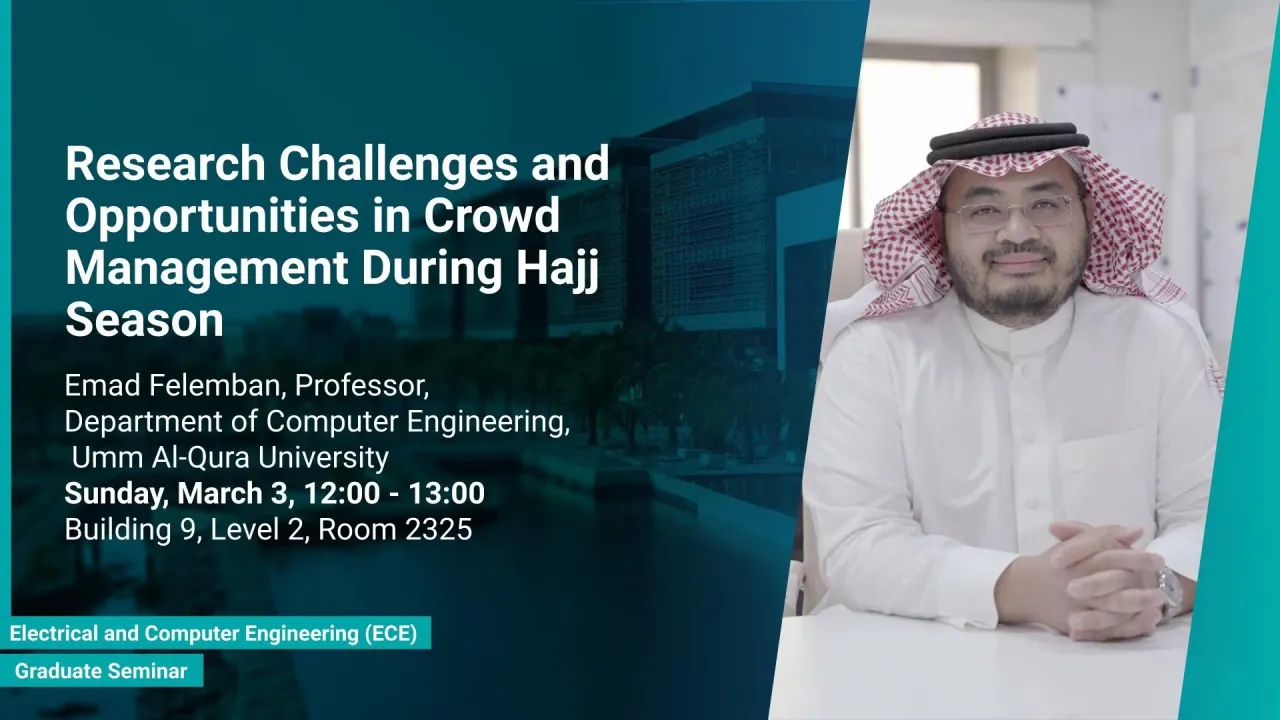
Research Challenges and Opportunities in Crowd Management During Hajj Season
- Emad Felemban, Department of Computer Engineering, Umm Al-Qura University.
B9 L2 H2
Hajj is a very complex event that requires huge logistical organization. Mobility is one of the most important logistical services needed since Hajj rituals are based on movement from one location to another.
Overview
Abstract
Hajj is a very complex event that requires huge logistical organization. Mobility is one of the most important logistical services needed since Hajj rituals are based on movement from one location to another. Managing this massive event using the current classical approach is very inefficient, yet, cannot lead us to reach the Vision 2030 goal of hosting 30M Pilgrims and Umrah Vistors in 2030. During the last 10 years, I have been working consistently to develop, adopt, and introduce new technologies in the field of Crowd and Transportation management in Hajj and Umrah. In this talk, I will shed some light on the most important challenges in Hajj Mobility management and will show how did we start to tackle them. Yet, there are a lot of problems to be solved and solutions to be enhanced.
Brief Biography
Emad Felemban is a professor in the Department of Computer Engineering in Umm Al-Qura University. He graduated with BSc from KFUPM in 1998, with MSc and PhD from Ohio State University in 2003 and 2009, respectively. He was the director of the Science and Technology Unit and Transportation and Crowd Management Center for Research Excellence in UQU. Prof. Felemban won multiple research funding from KACST, NSPSTI, SABIC, and the Ministry of Education on various research projects on Mission Critical Wireless Sensor Networks. He is currently working as a consultant with the Ministry of Hajj and Umrah for the last 6 years on Crowd Management Digital Transformation. He is also working with the General Car Syndicate and Kidana Development Companies . He won the grand challenge prize from KAUST on Hajj Crowd Management. He also has been granted 4 patents on scheduling, and spatial-temporal data analytics for crowd management from USPTO.
